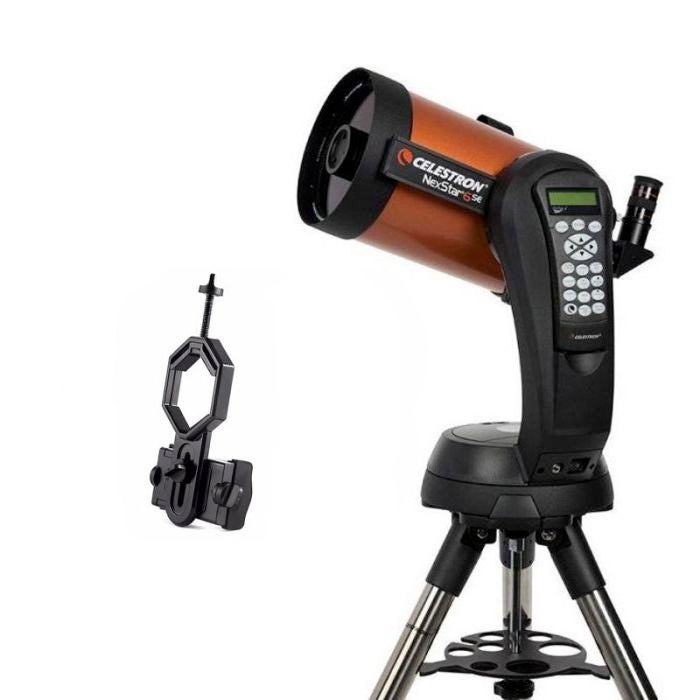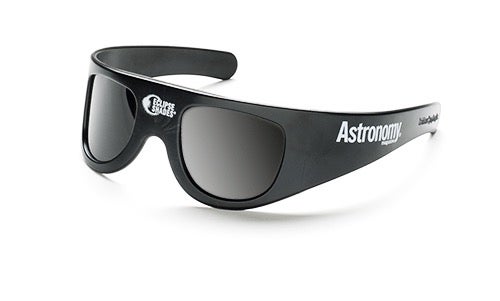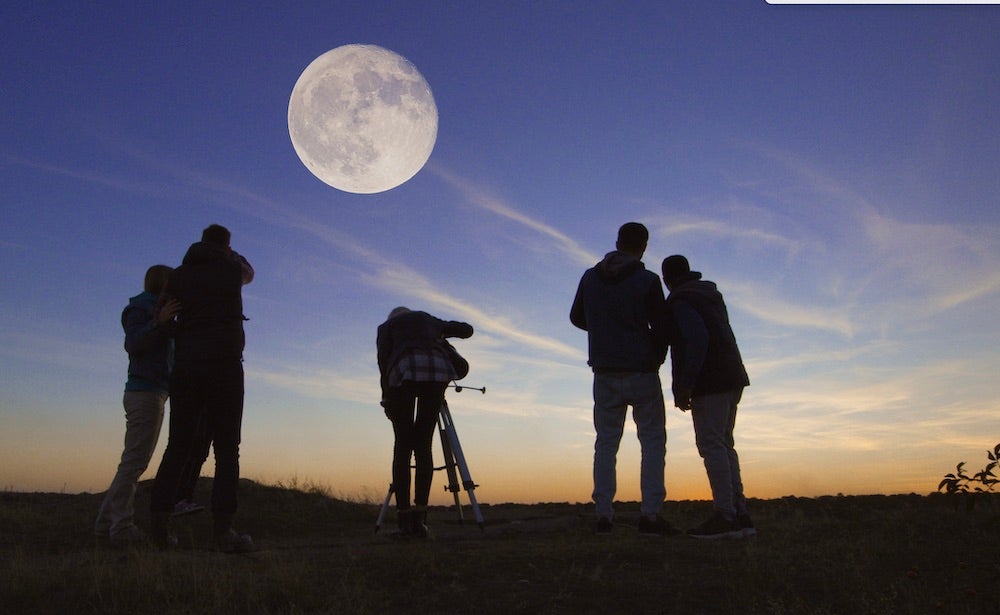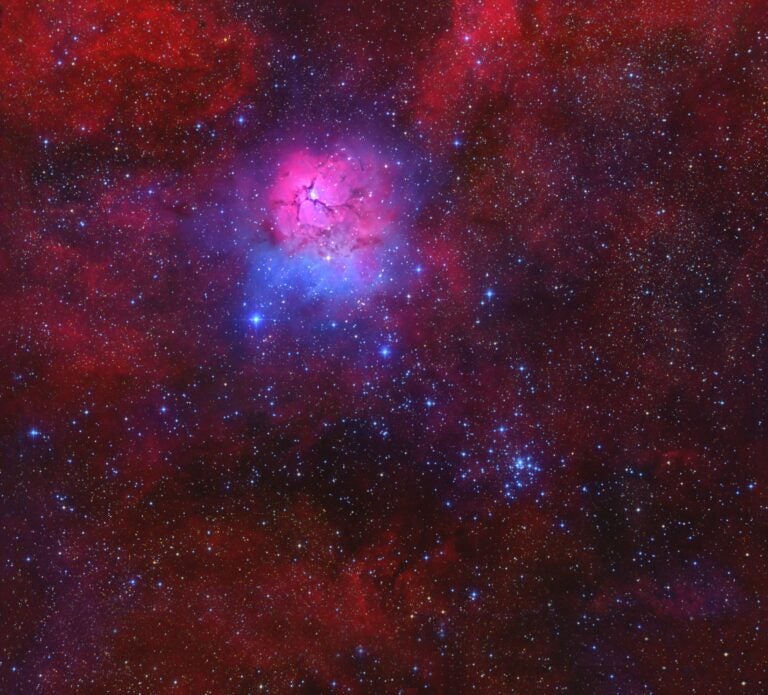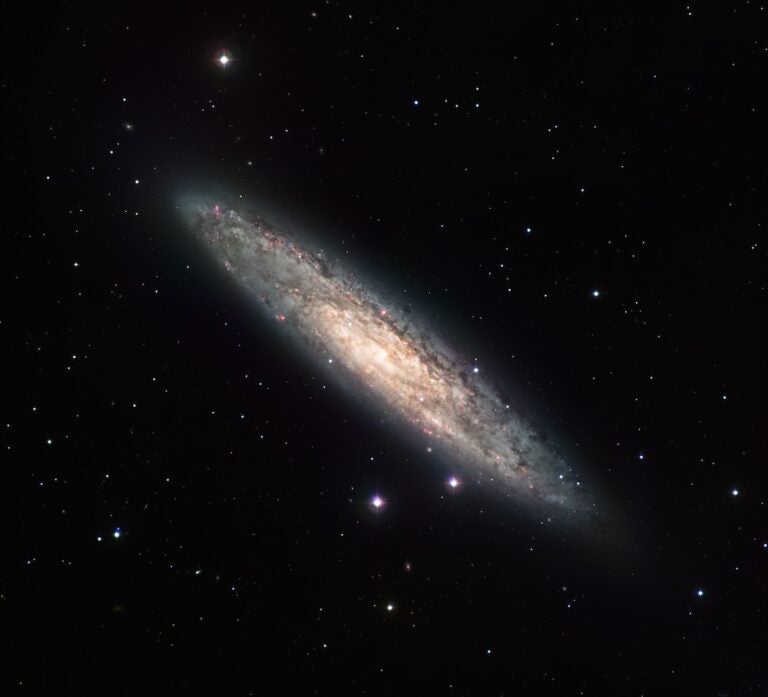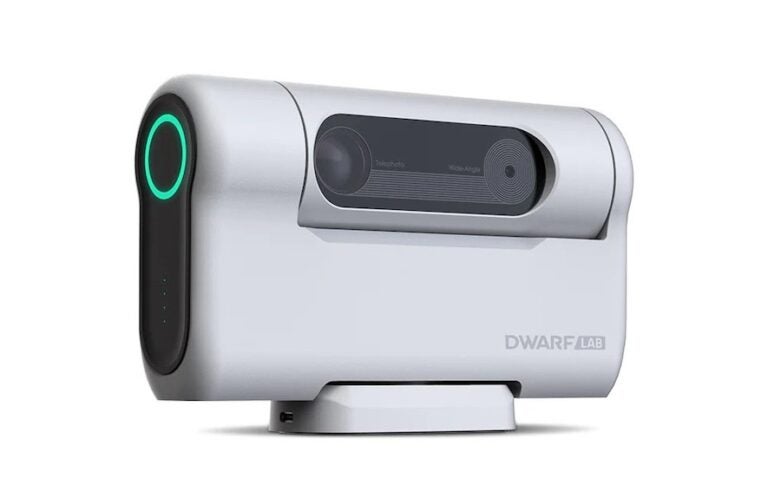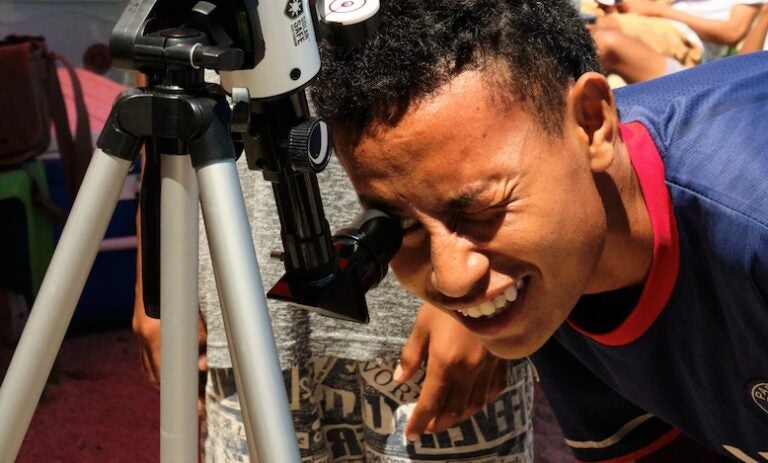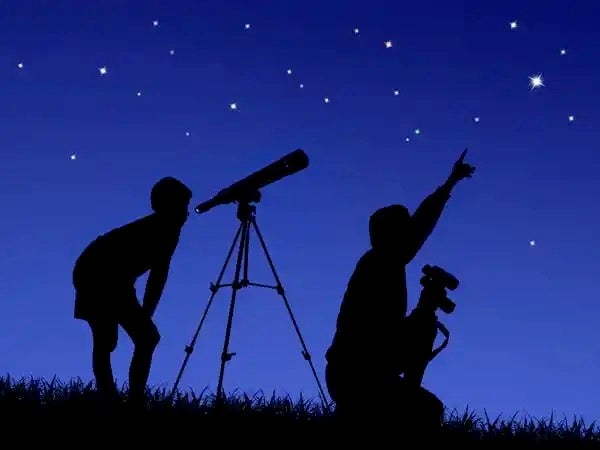
Note: This post contains affiliate links. When you buy a product through the links in this article, we may earn a commission.
Selecting the best telescopes for kids can be as important as the observations themselves.
Gazing up at the stars can spark a love for astronomy in kids that lasts a lifetime. But the quest begins with a single step — choosing the right telescope. In the world of astronomy, telescopes are the magic portals that unlock the wonders of the universe.
When purchasing a telescope for the young astronomer in your life, it’s vital to consider the child’s age, the likelihood of adult supervision, where it will be used, and what celestial sights are on their must-see list. A telescope that’s too complex can be intimidating, while one that’s too basic might not ignite the desired spark of fascination.
How we made our list of best telescopes for kids: The following guide was curated by the seasoned star-spotters at Astronomy Magazine. With decades of experience, we’ve brought you a selection of kids telescopes that balance ease of use with the ability to awe. We’ve zeroed in on features that cater to the budding astronomer: simplicity, durability, and quality optics. We may earn a commission if you purchase telescopes from the links below. However, whether or not these telescopes are available for purchase from a partner is not why they are on this list.
What to consider when purchasing a telescope for kids: When choosing the best telescope for the kids in your life, you generally want to find a balance between simplicity, durability, and the ability to actually see celestial objects clearly and easily. Below are some of the most important considerations and recommendations to think about when purchasing a telescope for kids:
- Ease of use: Kids tend to prefer a telescope that is easy to set up, with a straightforward and stable mount.
- Durability: Parents know kids can be hard on their belongings, so purchasing something that can withstand a bit of rough handling is ideal.
- Magnification: While high magnification sounds appealing, it is not always better because it can make the telescope harder to use and can degrade image quality if not paired with high-quality optics.
- Aperture: This is the diameter of the telescope’s main lens or mirror, which determines how much light the telescope can gather and thus how sharp and bright the images will appear.
- Maintenance: Refractor telescopes tend to require less maintenance than reflector telescopes because they are sealed from the elements.
- Cost: Telescopes can range from affordable to extremely expensive.
- Accessories: A good kid’s telescope might come with a few different eyepieces, a finder scope, and an astronomy book or software.
- Books and Apps: To help find and identify objects in the sky, consider getting a beginner’s guide to the stars or an app that helps locate celestial objects.
Types of telescopes for kids
Selecting the right type of telescope is crucial for nurturing your child’s interest in astronomy. Each variety offers unique benefits, from the easy-to-use refractors to the more advanced computerized models. Below are some of the most common types of telescopes for kids.
- Refractor telescopes: Refractors, which use lenses to focus light, are often recommended for kids because they are easy to use and maintain.
- Reflector telescopes: Reflectors, which use mirrors to direct light within the telescope, can typically offer larger apertures at a lower cost. But they can also be a bit more complicated to use for younger kids.
- Dobsonian telescopes: These reflectors are known for their simplicity and ease of use, though they can be bulkier than other scopes.
- Tabletop telescopes: These are portable and can be set up on a table or other solid surface, making them a good choice for kids.
- Computerized telescopes: These can track celestial objects automatically and are great for kids who are interested in technology.
Remember, the best telescope is one they will use. It’s better to have a simpler scope that gets regular use than a complex and expensive one that gathers dust. Consider the child’s interest level, patience, and responsibility when making your choice.
So, without further ado, here is our list of the best telescopes for kids of all ages.
Best telescopes for younger kids
Best for learning: Celestron AstroMaster 70AZ Telescope
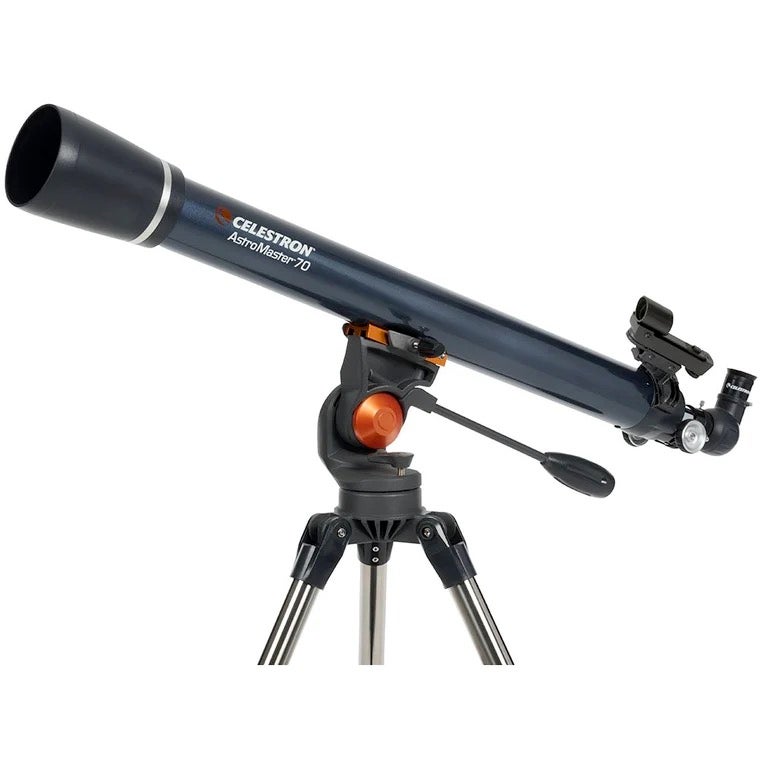
Features and benefits: This affordable refractor telescope offers a user-friendly design perfect for younger astronomers. It’s lightweight and easy to maneuver, which is great for small hands. It also comes with software to help locate and learn about different celestial objects.
- What to keep in mind: The tripod and mount are less robust than those found on more expensive telescopes, so care should be taken during use.
- Why we recommend It: For its simplicity and educational materials included, it’s a wonderful tool to spark a lifelong interest in the stars.
- Product details:
- Type: Refractor
- Mount: Altazimuth
- Aperture: 2.76-inch (70mm)
- Focal length: 3.54-inch (900 mm)
- Price: $189.95
Related: Some of the best telescopes for $500 or less
Most affordable: Celestron FirstScope Telescope
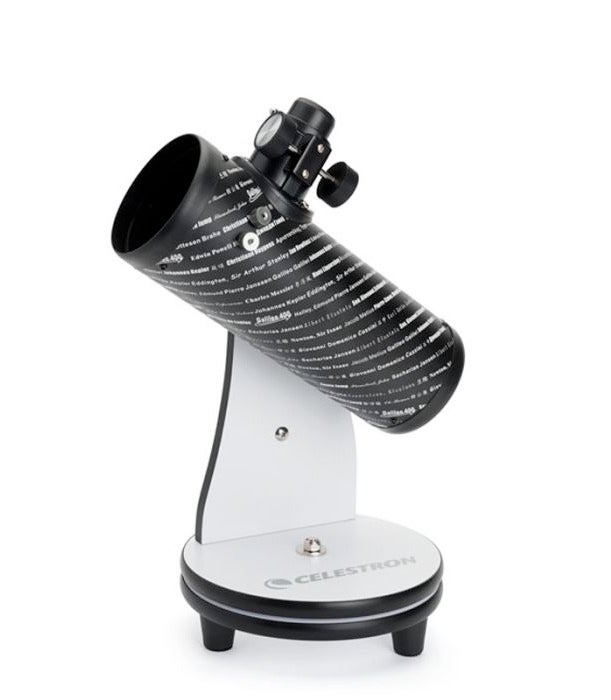
- Features and benefits: This is a tabletop reflector telescope that’s compact, easy to operate, and perfect for beginners. The FirstScope pays homage to Galileo and others in the exterior design, which can be inspiring for kids learning about the history of astronomy.
- What to keep in mind: Its small size means less light-gathering capability, so it’s best for viewing the Moon and brighter planets.
- Why We Recommend It: It’s an excellent, affordable first telescope that’s designed to be picked up and used with no fuss, making it ideal for younger children.
- Product Details:
- Type: Reflector
- Mount: Dobsonian-style tabletop mount
- Aperture: 3-inch (76mm)
- Focal length: 11.81 (300mm)
- Price: $74.95
Most User-Friendly: Meade Instruments Infinity 70mm AZ Refractor Telescope
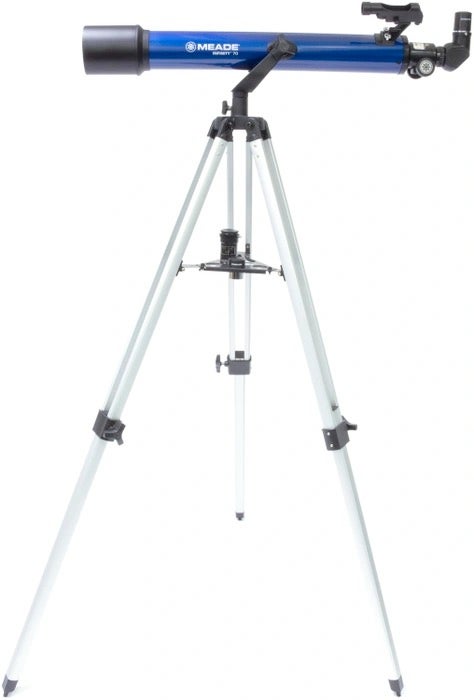
- Features and benefits: This is an excellent beginner telescope for younger kids, with an easy setup and a low-maintenance design. The altazimuth mount is straightforward to use, and it comes with an instructional DVD.
- What to keep in mind: The accessories are basic, and as the child’s interest grows, they might seek more advanced options.
- Why we recommend it: Its simplicity and educational materials make it a perfect telescope for igniting a young child’s interest in space.
- Product Details:
- Type: Refractor
- Mount: Altazimuth
- Aperture: 2.76-inch (70mm)
- Focal length: 27.6-inchh (700mm)
- Price: $119.99
Most Educational: Orion SkyScanner 100mm TableTop Reflector Telescope
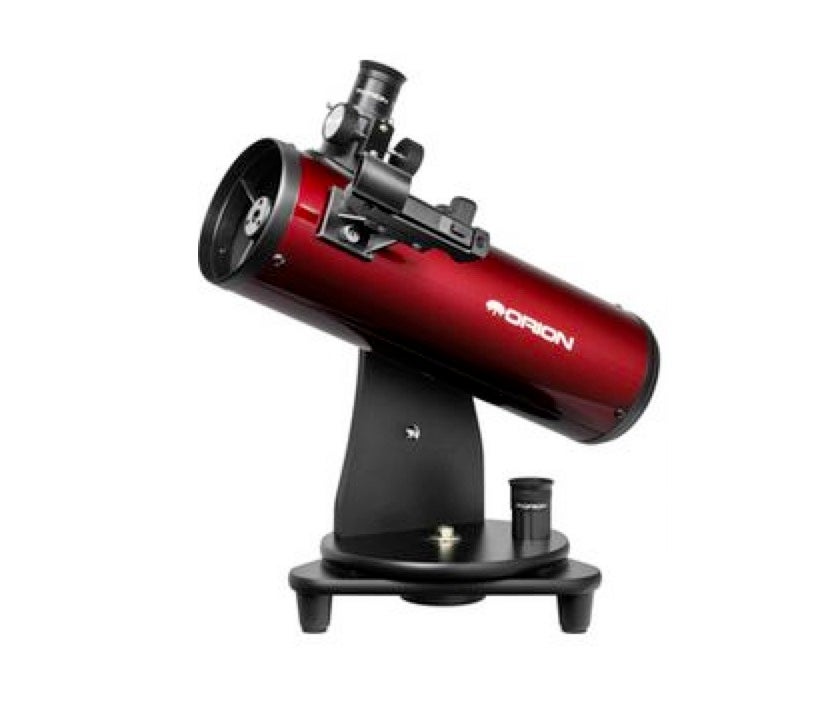
- Features and benefits: Compact and portable, this telescope can likewise be easily placed on a table for impromptu stargazing sessions. Despite its small size, it has a 100mm aperture that provides crisp images of the Moon and planets.
- What to keep in mind: The tabletop design may require a stable platform for the best experience.
- Why we recommend it: It’s a great combination of size, power, and ease of use, perfect for the curious young mind.
- Product Details:
- Type: Reflector
- Mount: Tabletop
- Aperture: 3.9-inch (100mm)
- Focal length: 25.2-inch (640mm)
Price: $149.99
Best telescopes for older kids
Best overall: Celestron NexStar 130SLT Computerized Telescope
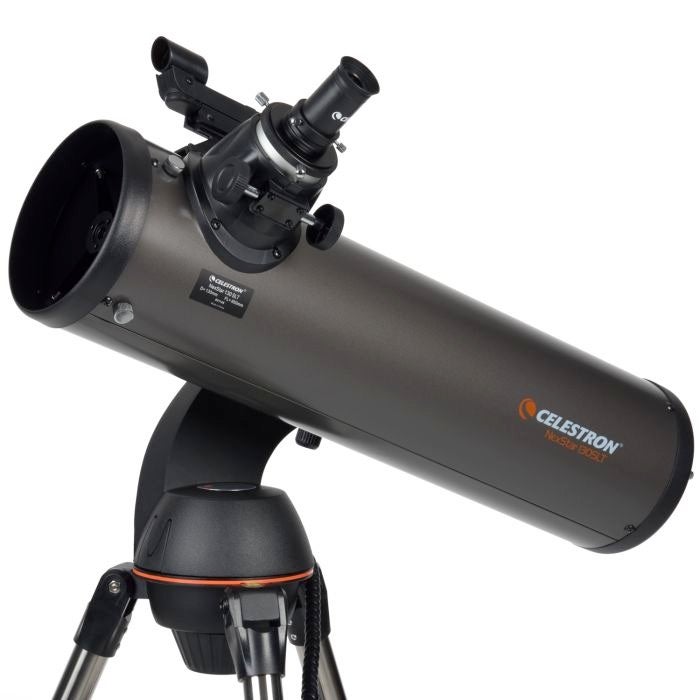
- Features and benefits: The NexStar 130SLT offers a computerized system that can automatically find and track celestial objects, making it a thrilling telescope for an older child with a serious interest in astronomy. It has a relatively large 130mm aperture for clear, bright images.
- What to keep in mind: It’s more expensive and could require some parental assistance to set up. The technology aspect might have a learning curve, but it’s beneficial for educational purposes.
- Why we recommend it: It balances technology with quality optics, providing an educational and immersive astronomical experience.
- Product Details:
- Type: Reflector
- Mount: Motorized Altazimuth
- Aperture: 5.1-inch (130mm)
- Focal length: 26-inches (650mm)
- Price: $499.95
Best for Tech-Savvy Kids: Celestron AstroFi 102 Wi-Fi Maksutov-Cassegrain Telescope
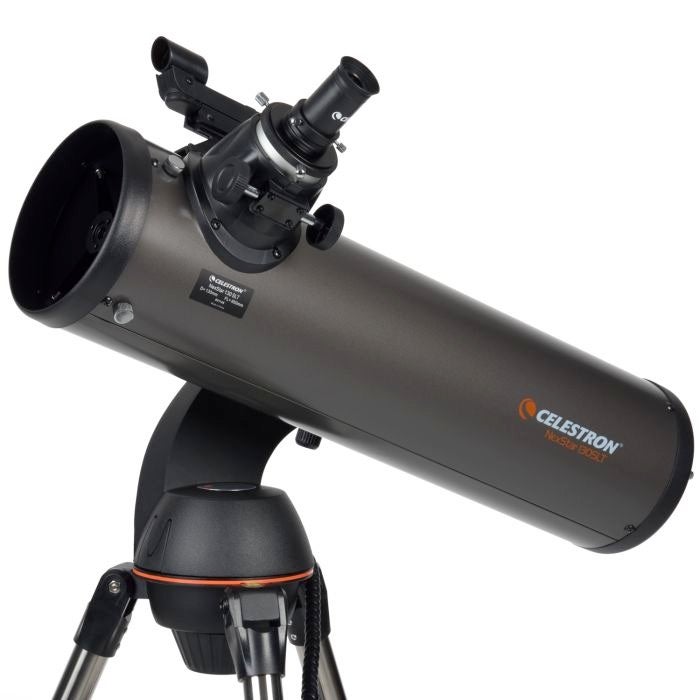
- Features and benefits: Combining quality optics with the latest technology, this telescope can be controlled with a smartphone or tablet using Celestron’s SkyPortal app. It’s a fully automated setup that can enhance the learning experience.
- What to keep in mind: The reliance on technology means it might not be the best option for children interested in a more hands-on, traditional stargazing approach.
- Why we recommend it: For the gadget-loving kid, this provides an engaging way to explore the night sky with the touch of a screen.
- Product Details:
- Type: Maksutov-Cassegrain
- Mount: Computerized Altazimuth
- Aperture: 4-inch (102mm)
- Focal length: 52.2-inch (1325mm)
- Price: $529.95
Best for Aspiring Astrophotographers: Orion ED80T CF Triplet Apochromatic Refractor
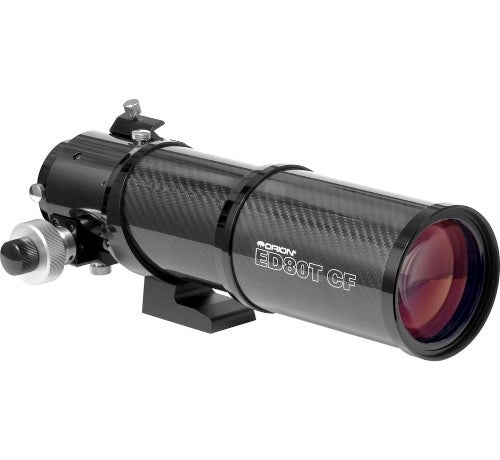
- Features and benefits: The Orion ED80T CF is a premium telescope ideal for young astrophotography enthusiasts. It features a triplet apochromatic refractor design, ensuring minimal chromatic aberration and sharp, vivid images. Its 80mm aperture offers a wide field of view, ideal for imaging nebulae, galaxies, and star clusters.
- What to keep in mind: This telescope is a higher-end option, and its price reflects its advanced capabilities. It’s more suitable for older kids with a deep interest in astrophotography.
- Why we recommend it: For older kids serious about astrophotography, this telescope provides the advanced features and image quality necessary to dive headlong into celestial photography. Its portability and optical performance make it a worthy investment.
- Product Details:
- Type: Triplet Apochromatic Refractor
- Mount: Adaptable to both Altazimuth and Equatorial mounts
- Aperture: 3.15-inch (80mm)
- Focal length: 18.9-inch (480mm)
- Price: $999.99
Caring for your telescope
Telescopes are the keys that unlock the universe. And they demand care. That’s why it’s important to teach your kids to handle their instrument with respect. Ensure lenses are wiped with a proper cloth, the body is kept dust-free, and the telescope is stored safely after each celestial adventure. Maintenance is part of the stargazing journey, and it’s also a valuable lesson in responsibility.
Frequently asked questions (FAQs)
How did we pick these telescopes?
The telescopes featured in this list were chosen through a combination of expert insights from our Astronomy magazine veterans and practical considerations for young users, such as ease of use, educational value, and quality of construction.
What is the best telescope for kids to see planets?
For young astronomers eager to explore planetary details, the Celestron NexStar 130SLT Computerized Telescope stands out as an excellent choice. This telescope combines a large 130mm aperture with advanced computerized technology, making it ideal for viewing planets. The larger aperture allows more light to enter, providing clearer and brighter views of celestial bodies like Jupiter, Saturn, and Mars. The computerized mount adds ease of use, as it can automatically locate and track planets, making it easier for kids to find and observe these celestial wonders. Furthermore, its high-quality optics ensure that the images of planets are not only bright but also sharp and detailed, enhancing the overall viewing experience.
For more options, check out: The best telescopes for beginners to view planets, galaxies, and more.
Are super-cheap telescopes worth it? No.
When it comes to purchasing telescopes for kids, it’s important to strike a balance between affordability and quality. Less-expensive telescopes can be a good starting point for beginners, offering a basic introduction to astronomy without a significant financial commitment. However, very inexpensive models often come with limitations, such as lower-quality optics, less durable construction, and reduced clarity and brightness in viewing celestial objects.
What makes a telescope good for kids?
A good telescope for kids is one that strikes a balance between user-friendliness, durability, and long-term value. It should be straightforward to set up and operate. Overly complex mechanisms can discourage young astronomers. It should also be sturdy. Telescopes for kids should be able to withstand occasional bumps and knocks. Finally, a good telescope for kids is one that can grow with their interest, offering the possibility of adding accessories or enhancing their observing experience as they become more skilled.
Remember, the best telescope for your child is one that they will use – one that aligns with their interests and your guidance. The universe awaits, so choose wisely. And happy stargazing!

